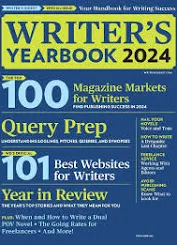Counting Down and Looking Up
“Yes, the end of December is the perfect time for a year-end review, for taking a few moments to look at what you’ve accomplished over the past 12 months, and taking stock of all the things you still want to accomplish,” Nathalie Thompson of vibeshifting.com so aptly writes…
Counting down the past year, you are reading the 130th semi-weekly Say It For You blog post of 2023, There have also been twelve monthly Say It For You online newsletters, Meanwhile, year-round, the team has generated dozens upon dozens of blog posts and other content pieces for our clients.
Is blogging still going to be “a thing” in 2024 and beyond? A resounding “Yes!” is our answer, The Say It For You blog is on a WordPress platform; on that platform alone, there are now more than 20 billion views per month. “Even in today’s world,” Creative Boom remarks, “where brevity rules and attention spans are seemingly at an all-time low, there undoubtedly remains a place for a regularly-maintained blog that’s crafted with care and with its audience in mind.”
While Mark Prosser of Score.org lists reasons for keeping an active business blog (driving traffic to the website, informing customers about the good work you do, sharing client testimonials, finding out what customers want, promoting your brand to potential employees, and analyzing marketing demographics), there is one important thing about blogging that I try to impress on each business or practice owner: a blog is an ongoing training course for you.
You see, the interesting thing I’ve found over the past sixteen (yes, count ’em!) years of business blogging is that the very exercise of thinking through the themes and the ideas for the blog, even if the actual content writing task is being outsourced, helps train business owners and practitioners to articulate those ideas when interacting with their own customers. In a very real sense, maintaining an active blog not only helps your business, it can help you do your business better!
Meanwhile, for us on the content writing team, the ongoing learning process is the true blessing. The tremendous variety of topics – from dry cleaning to electromagnetic fields, from family law to finance, from HVAC to dry cleaning, from air quality to architecture, organ transplants to trucking, car painting to long term care…..every assignment is a doorway to fascinating insights.
At Say It For You, we’re right there with you, counting down to the end of 2023, and looking forward – and upwards – to 2024.






Follow us online!